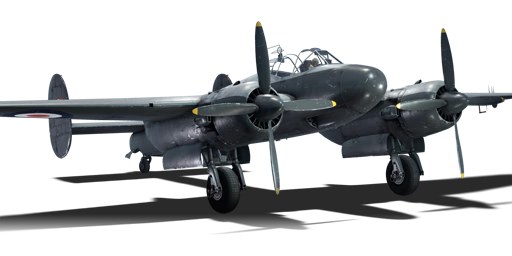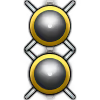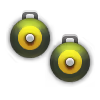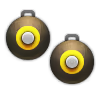



Development for the Brigand began as a successor to the Beaufighter, namely as a strike aircraft and torpedo bomber. Bristol used their existing Buckingham aircraft design as the basis, but development delays caused the plane to not be ready until after the war in 1946. Without a war to fight, the Brigand was utilized for training or lower-intensity conflicts such as the communist insurgency in Malaya.
Introduced in Update 1.63 "Desert Hunters", the Brigand B 1 can utilize its engine performance and armament for high-altitude interceptions against enemy bombers. With four nose-mounted 20 mm cannons, it can engage bombers head-on very easily. However, the Brigand's less impressive agility and roll speed means it is not very useful against manoeuvrable targets, so it is only limited to large lumbering planes. If all bombers were shot down, the Brigand can move on to ground attack with its rockets and bombs and help the team whittle down the tickets needed for a victory.
flaps
flaps
flaps
brake
| Belt | Belt filling | Armor penetration (mm) at a distance: | |||||
|---|---|---|---|---|---|---|---|
| 10 m | 100 m | 500 m | 1000 m | 1500 m | 2000 m | ||
| HEI/SAP-I/T | 21 | 19 | 14 | 9 | 5 | 4 | |
| AP-T/HEI/SAP-I | 36 | 33 | 24 | 15 | 10 | 7 | |
| SAP-I/HEI/AP-T/HEI/SAP-I | 36 | 33 | 24 | 15 | 10 | 7 | |
| AP-T/HEI/T | 36 | 33 | 24 | 15 | 10 | 7 | |
| AP-T/SAP-I/HEI/AP-T | 36 | 33 | 24 | 15 | 10 | 7 | |
| HEI/SAP-I | 22 | 20 | 14 | 9 | 6 | 4 | |
| Name | Weight | Slot | ||||||||||
|---|---|---|---|---|---|---|---|---|---|---|---|---|
| 86.2 kg |  |  |  |  |  |  |  |  | ||||
| 213.1 kg |  |  | ||||||||||
| 2 × | 426.2 kg |  | ||||||||||
| 2 × | 991.4 kg |  | ||||||||||












Flight performance | |
|---|---|
Survivability |
|---|
Weaponry | |
|---|---|